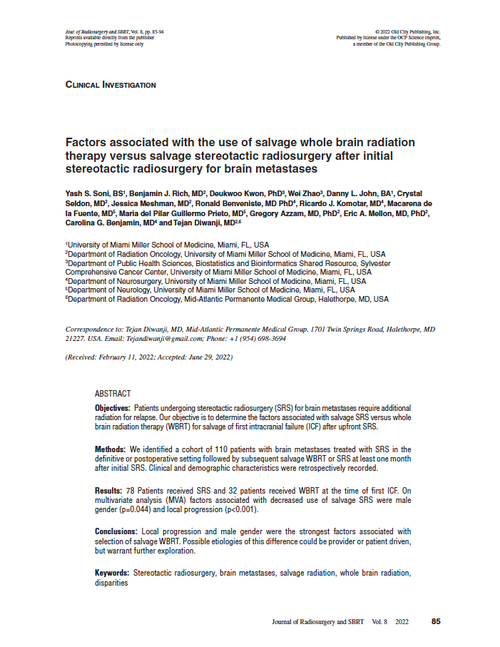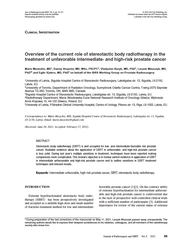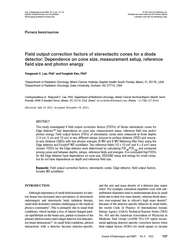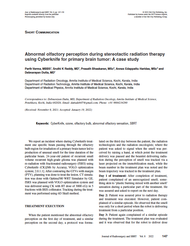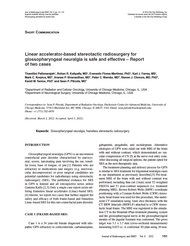- Home
- Journal Contents Downloads
- JRSBRT Downloads
- JRSBRT 8.2, p. 85-94
Product Description
Factors Associated with the Use of Salvage Whole Brain Radiation Therapy Versus Salvage Stereotactic Radiosurgery After Initial Stereotactic Radiosurgery for Brain Metastases
Yash S. Soni, Benjamin J. Rich, Deukwoo Kwon, Wei Zhao, Danny L. John, Crystal Seldon, Jessica Meshman, Ronald Benveniste, Ricardo J. Komotar, Macarena De La Fuente, Maria Del Pilar Guillermo Prieto, Gregory Azzam, Eric A. Mellon, Carolina G. Benjamin and Tejan Diwanji
Objectives: Patients undergoing stereotactic radiosurgery (SRS) for brain metastases require additional radiation for relapse. Our objective is to determine the factors associated with salvage SRS versus whole brain radiation therapy (WBRT) for salvage of first intracranial failure (ICF) after upfront SRS.
Methods: We identified a cohort of 110 patients with brain metastases treated with SRS in the definitive or postoperative setting followed by subsequent salvage WBRT or SRS at least one month after initial SRS. Clinical and demographic characteristics were retrospectively recorded.
Results: 78 Patients received SRS and 32 patients received WBRT at the time of first ICF. On multivariate analysis (MVA) factors associated with decreased use of salvage SRS were male gender (p=0.044) and local progression (p<0.001).
Conclusions: Local progression and male gender were the strongest factors associated with selection of salvage WBRT. Possible etiologies of this difference could be provider or patient driven, but warrant further exploration.
Keywords: Stereotactic radiosurgery, brain metastases, salvage radiation, whole brain radiation, disparities
After payment has been processed for your order of a digital copy (PDF) of this article, you will see a download link on your completed order page and also receive an email containing a download link. The links, which will enable you to download one copy of the article, will expire after 24 hours.
 Loading... Please wait...
Loading... Please wait...

